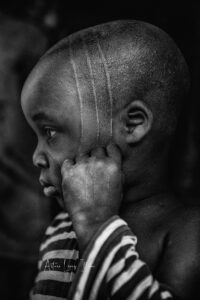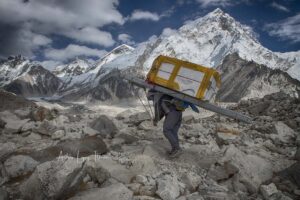


First, can you tell us a little about yourself and how did you get started with photography?
Photography was not initially important to me, it did not attract my attention. What did attract me from a very young age was traveling. Over time I did need to show what I saw, what I lived and what I felt, but it was really bad taking photos with my little camera. When I showed the images to family or friends, the only thing they saw was a moving photo and in which it was not known what I had wanted to take, it was very frustrating. Little by little I was striving to capture the essence of travel, so I gradually became interested in the world of photography. It was very hard for a long time, I traveled frequently, but saw no results. I returned and did not achieve my goal, my photographs were hardly improving, but fortunately, after a lot of work, I think that more or less I was improving when it came to capturing what I saw; Although I am an eternal dissatisfied and I am always unhappy with my work. From my travels I come back with the feeling that I could do better and maybe, that feeling is good to keep trying and improve as a photographer. Currently, I cannot conceive of traveling without my camera.
How would you describe your photographic approach?
Mainly my photography is documentary and anthropological. In my trips I look for people within their cultural and social environment to which they belong and it is there where I really feel comfortable. I focus a lot on fading cultures and ancient traditions.But obviously, when you travel you have the opportunity to see many things and live countless situations that are worth photographing, and I do. I am not as “purist” as other photographers, who are very clear about their specialty and find it difficult to get out of it.
How has photography allowed you to connect with local cultures?
I think it has been the other way around, that visiting other cultures or ethnic groups was what made me feel little by little the need to photograph them and rescue those unique moments, that I had kept in me, but that little by little they fade over time .
It is true that since photography is digital, it is much easier to interact with the people you are going to photograph, showing them the result on the screen, it takes away tension at the moment and is cause for laughter. With analog photography, you shot, thanked and left, it was much colder.
What is your equipment for travel photography?
I currently work with Nikon D800 and for various purposes.
Nikon 24-70mm, Nikon 70-200mm , Nikon 16-35mm
What configuration do you choose?
I only give priority to the diaphragm and by default I have underexposed 1/3 of the diaphragm to give it a little more contrast.
I think I anticipated this question earlier and answered it.
There are many photographers that I like, but in particular and the ones that influenced me the most were Steve Mc Curry and Sebastiao Salgado. The first one has masterpieces, in which you spend a good time looking at the scene and nothing is missing, everything is perfect and Salgado, what to say about this photographer, that magical black and white. But as I have already mentioned, there are true masters of travel photography.

Have you ever missed what could have been a memorable shot?
Yes, I have failed not once, but a few times. On some occasions for not having the camera ready and being a quick scene and the image has moved, or is out of focus. I have had many situations in which I have not been able to achieve that unique image and that creates frustration that lasts for several days.
It is very difficult to stay with a single image, but I will choose one of the ones that I like the most, which does not always correspond to the best, it may be due to the circumstances in which it was taken, there may be some more sentimental than technical reason in that image, but I will try to make the photo you choose take a bit of everything. This image belongs to a series, I do not know if it is one of my favorites, but it is true that I really enjoyed doing it. It is from some races that are held in Sumatra, Indonesia. I remember being in front of the oxen and when they got very close I had to run away and get out of their way. Everything had to be very fast and have the camera settings ready. It was really an exciting and good day, the result is spectacular.
Do you have any projects planned for the year?
It is a very difficult year to make plans of any kind due to the virus crown, I think this year you will be able to travel little. I had planned to organize some photographic trips around Africa, but you have to wait to see how the pandemic evolves.




Arturo López Illana